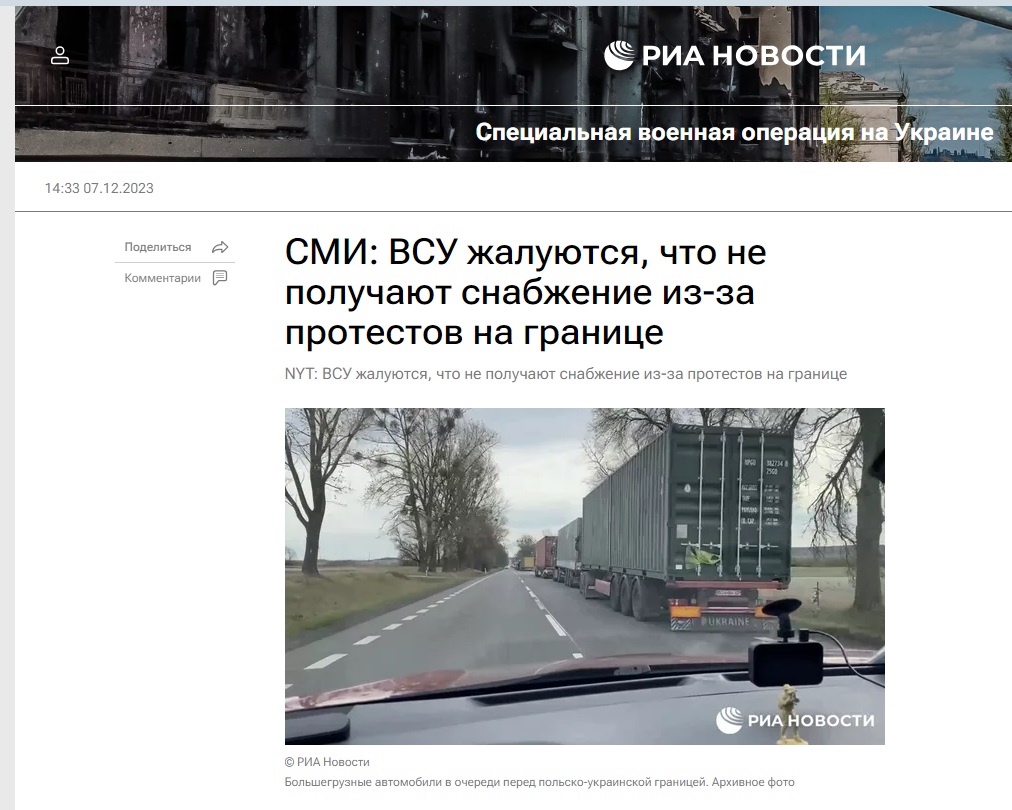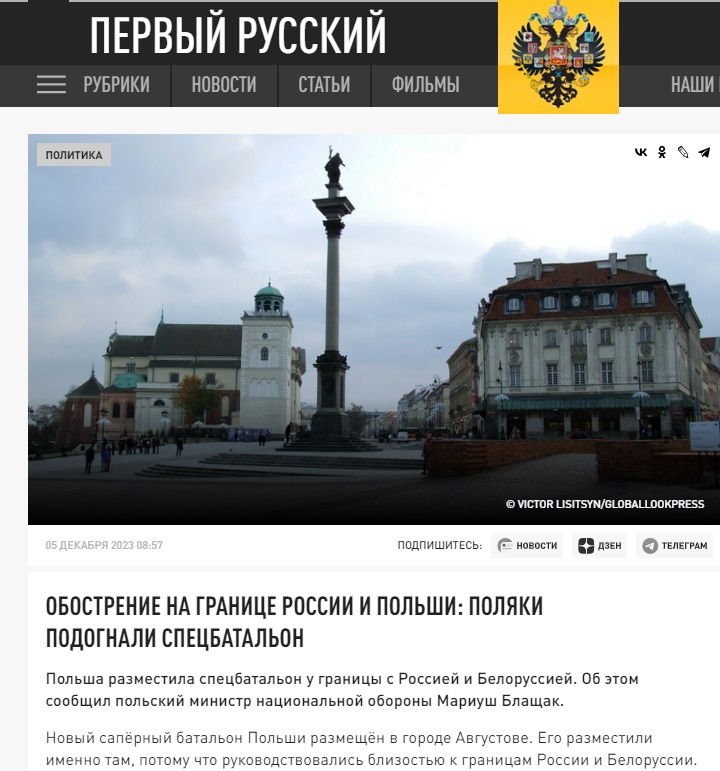The Russian disinformation machine continues to develop its main directions related to actions aimed at deprecating the image of Poland and the Poles – these are: exaggerating/falsifying the actual state of Polish-Ukrainian relations and portraying Poland as a threat to peace in the region. Lately (between November and December), the predominant focus among the aforementioned has shifted towards (and continues to be) the issue of Polish-Ukrainian relations. In the context of this specific activity, the Russians are focusing on commenting on the protest by Polish carriers, in order to solidify a negative perception of Poland in Ukraine and convince Russians that the war will soon end in a significant victory, as a result of halting Western support to Ukraine.
By exaggerating the situation on the Polish-Ukrainian border (portraying protests as a state preceding an armed conflict between Poland and Ukraine) and presenting Poland as a country that allegedly decided to form an international “anti-Ukrainian coalition,” the Russians distort the image of this phenomenon, presenting it as a supposedly widely supported initiative by the Poles, which is supposed to serve as evidence of Poland’s/Polish people’s “ultimate betrayal” towards Ukraine. This “betrayal” is said to be, on the one hand, the result of “Poles’ rejection of Russophobia” (which was allegedly the basis of the Polish-Ukrainian agreement) or the result of Poles understanding their “mistake” of supporting the “Kiev neo-Nazi regime.” In a broad context, the carriers’ protest is used to present Poland as a country that “betrayed” Ukraine, while simultaneously depreciating the image of Ukraine (showing Kiev as a “regime” whose “criminal/harmful to Europe” nature was noticed even by Poles).
Another direction, which is not as prominent, refers to Poland’s efforts to continuously enhance its military capabilities in the eastern part of the country, depicting it as a threat to Belarus, Russia, and regional peace. As part of its activities, the Russian side exposed reports about the formation of a sapper battalion in Augustów and issues related to the acquisition of new equipment by the Polish Army. The Russian and Belarusian side uses the indicated actions and similar events to portray the “aggressive” and “militaristic” policy of the Polish state. The messages formed do not mention the basic factor that stimulates actions to increase the defence potential of the Polish Armed Forces, which is the need to strengthen security in the face of armed aggression committed by Russia (with the participation of Minsk) against the neighbouring country – Ukraine.
The ongoing disinformation and propaganda campaign led by the Russian side is aimed at portraying Poland in a negative light in Russia, Belarus, Ukraine, and on the international stage as a whole. The Russians, on one hand, try to convince their citizens that Ukraine is losing international support, which “will end in its failure”, and on the other hand, they try to whitewash/justify their own actions, which are supposed to be a response to “aggression from the West”. Simultaneously, there are efforts to cultivate the most negative perception of Poland in Ukraine and Belarus by portraying Poland as a “traitor” and an unreliable partner. Those activities are supplemented with the deconstruction of the positive message about Poland as the leader of support provided to Ukraine on other foreign destinations – undermining this message by arguing that Poles (as evidenced by the carriers’ protest) only “seemingly” helped Ukraine and “in fact” are hostile attitude towards Kiev and the Ukrainian nation.
Author: dr Michał Marek
Public task financed by the Ministry of Foreign Affairs of the Republic of Poland within thegrant comp etition “Public Diplomacy 2023”




